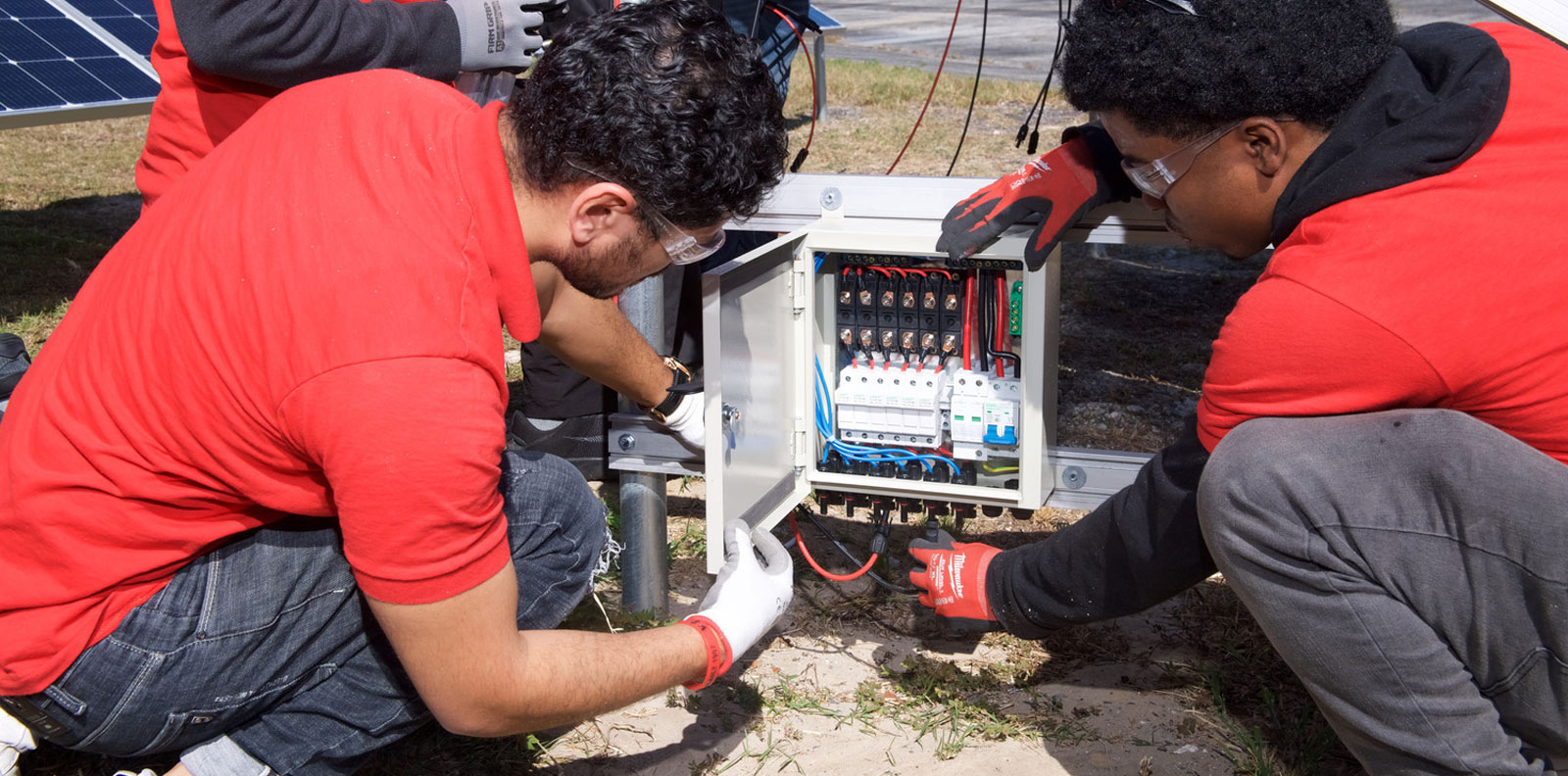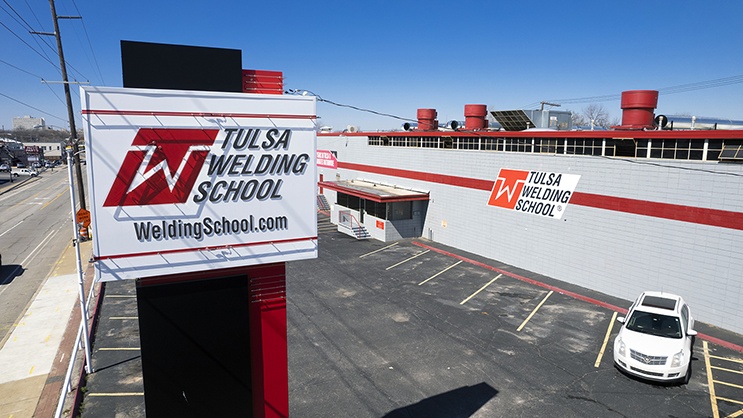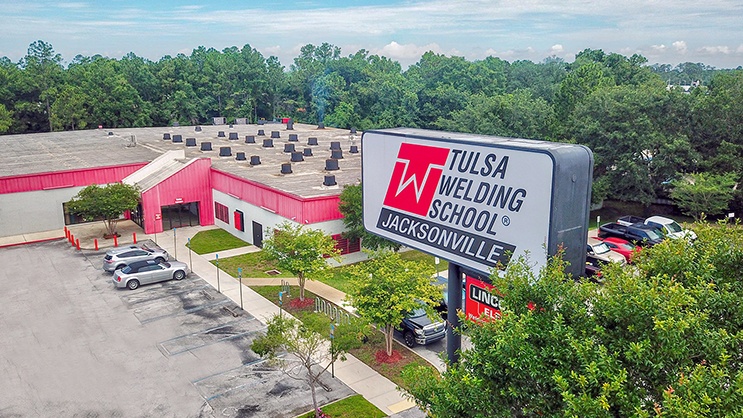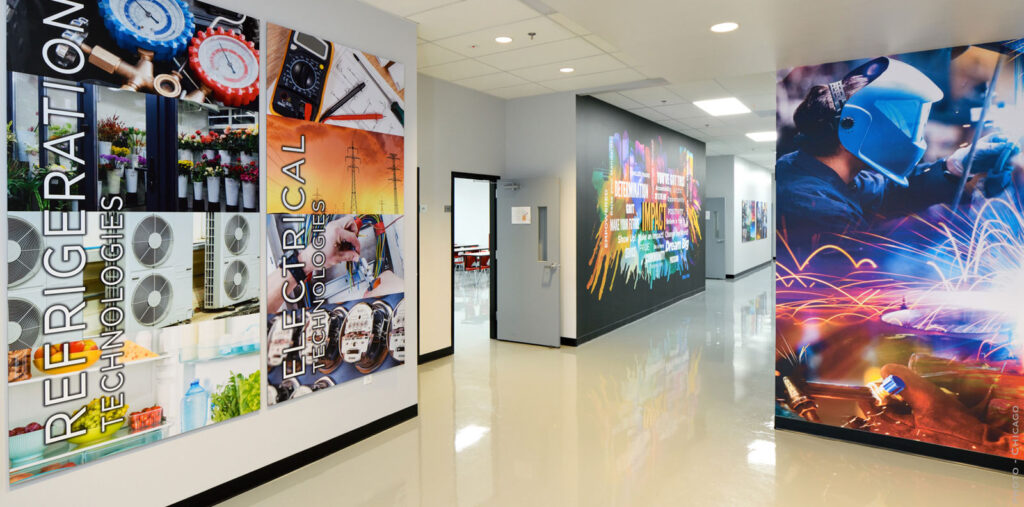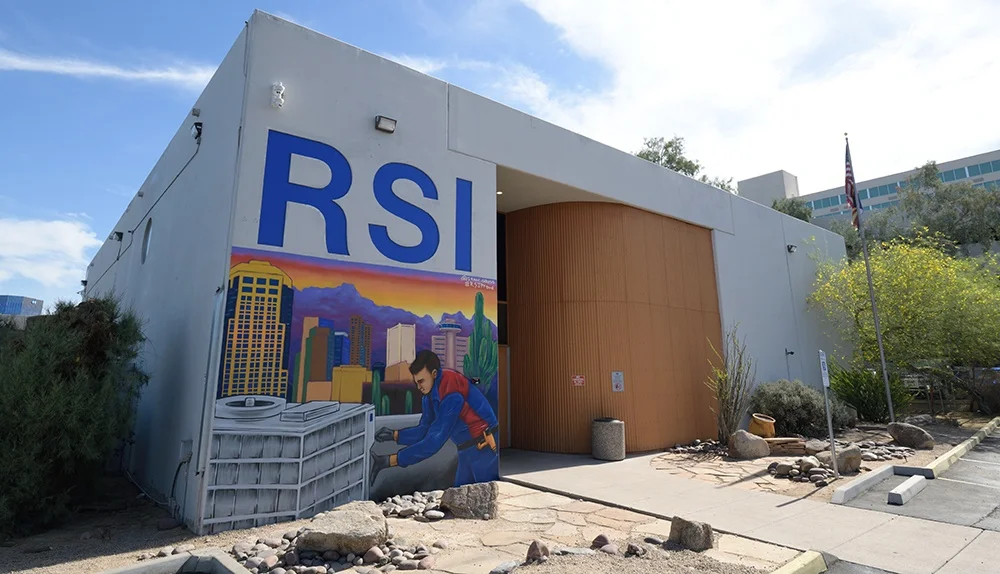TWS is a Great Training Option for Everyone
Learn more about how we can prepare you to advance your career.
Completing the Electrical Technologies program at Tulsa Welding School (TWS) or equivalent program is necessary if you are interested in solar panel installation, maintenance, and repair. This article will review the basics of photovoltaic systems and the installation process.
What is a Photovoltaic System?
A photovoltaic (PV) system is a renewable energy setup that converts sunlight into electricity using solar panels. It typically includes solar panels, an inverter, mounting structures, and optional batteries. The system provides power for homes and businesses or feeds excess energy back to the grid.
What are the Basics of Photovoltaic Systems?
Photovoltaic systems are increasingly popular due to their renewable nature and the global push for sustainable energy. Here are the basics of photovoltaic systems:
Solar Panels (Modules): Made of photovoltaic cells, usually silicon-based, which convert sunlight into direct current (DC) electricity.
Have You Considered a Career in the Skilled Trades?
Fill out the form to recieve a no obligation info packet.
Inverter: This converts the DC electricity the panels produce into alternating current (AC), which is used by most electrical appliances.
Mounting Structure: This supports and secures the solar panels in a position to optimize sunlight exposure. It is often installed on rooftops or in open fields.
Battery: Stores excess energy when sunlight is unavailable, such as at night or on cloudy days.
Charge Controller: This device manages the flow of electricity to and from the batteries to prevent overcharging or deep discharging.
Electrical Wiring and Protection: ensures the safe transfer of electricity from the panels to the inverter and eventually to the utility grid or a local power system.
How Do Photovoltaic Systems Work?
Solar panels work by absorbing sunlight, causing photons to loosen electrons in the photovoltaic cells. The movement of electrons creates an electric current (DC). The DC electricity passes through an inverter and is converted into AC electricity. The electricity is either used immediately to power devices or stored in batteries for later use. Any excess electricity can be returned to the grid (grid-tied systems).
What are the Benefits of Photovoltaic Systems?
Photovoltaic systems have many benefits. They are a renewable energy source that reduces dependency on fossil fuels. They can lower electricity bills due to the self-generation of power, require minimal maintenance with long-lasting components, and are environmentally friendly, producing no greenhouse gas emissions.
How are Photovoltaic Systems Installed?
Installing photovoltaic systems is a structured process that creates efficient energy generation from sunlight while maintaining safety and reliability. Below is an overview of installing how the photovoltaic system process is completed:
Site Assessment and Planning
The first step in installing a photovoltaic system is evaluating the installation site. Project managers assess factors such as sunlight availability, shading, roof condition, and the orientation of the installation area. For rooftop systems, the roof’s structural integrity is checked to ensure it can support the weight of the solar panels and mounting equipment. Ground-mounted systems require an assessment of soil conditions and available space.
In addition to site evaluation, energy consumption analysis is performed to determine the system’s size. This involves reviewing electricity bills to calculate daily energy needs and designing a system that can meet those requirements.
Designing the System
Once the site assessment is complete, the PV system is designed. Panels are positioned to maximize sunlight exposure. Depending on the energy needs and location, the design may include grid-tied, off-grid, or hybrid configurations. The layout of wiring, inverters, and optional components like batteries helps create optimal performance.
Obtaining Permits and Approvals
Before installation begins, necessary permits and approvals must be obtained. These may include:
- Building Permits: For rooftop or structural installations.
- Electrical Permits: To ensure compliance with local electrical codes.
- Utility Approval: Utility companies may require specific interconnection agreements for grid-tied systems.
Testing and Commissioning
After installation, the photovoltaic system undergoes rigorous testing to make sure it operates correctly. This includes verifying electrical connections, checking panel alignment and performance under sunlight, testing the inverter’s functionality, and monitoring energy output to make sure it meets design specifications. Once the system passes all tests, it is commissioned for regular use.
Maintenance and Monitoring
Routine maintenance can help the system operate efficiently. Panels are cleaned regularly to remove dirt and debris, and components should be inspected periodically for wear or damage. Monitoring systems can track energy production and detect performance issues early.
Why Pursue a Career in Photovoltaic Systems?
Pursuing a career in photovoltaic systems offers numerous benefits, including:
Growing Industry Demand: The global push for renewable energy has created a high demand for skilled solar energy installation, maintenance, and design professionals. According to the U.S. Bureau of Labor Statistics1, the role of solar panel technician is projected to grow 48 percent in the U.S. through 2033.
Sustainability Impact: You contribute to reducing carbon emissions and promoting clean energy, making a positive environmental impact.
Job Security: As the solar industry expands, professionals with photovoltaic expertise are increasingly sought after, ensuring stability and career longevity.
Hands-On Work: Solar installation offers an active work environment for those who enjoy working outside, and doing hands-on tasks.
Advancing Technology: Be at the forefront of innovative renewable energy technologies, working with cutting-edge systems.
Promising Career Growth Potential: Training in photovoltaic systems opens doors to certifications and higher-level roles in the green energy sector.
Want to Learn More?
The Electrical Technologies program at TWS trains students in hands-on courses guided by expert instructors for one purpose: to prepare them for job opportunities as entry-level electricians. This in-depth program teaches students mechanical and electrical principles, residential and commercial wiring fundamentals, solar photovoltaic systems and more. This program is offered at our Dallas Metro campuses. Contact us to learn more about our Electrical Technologies program.

